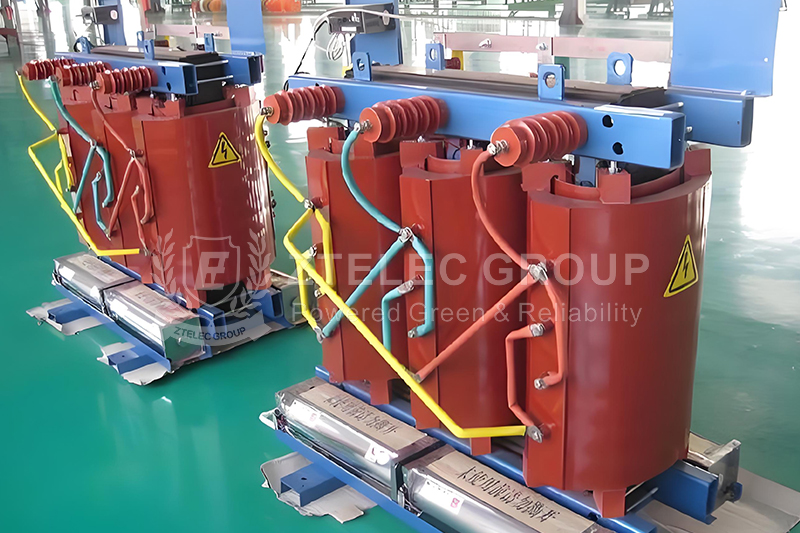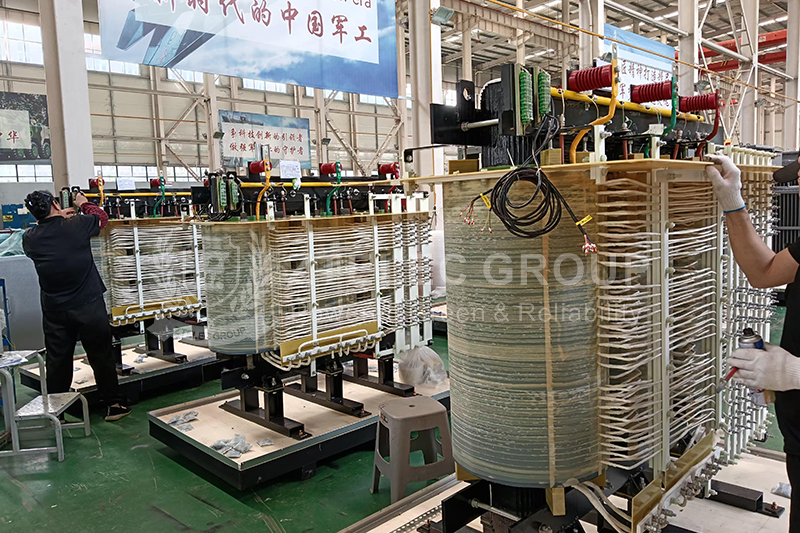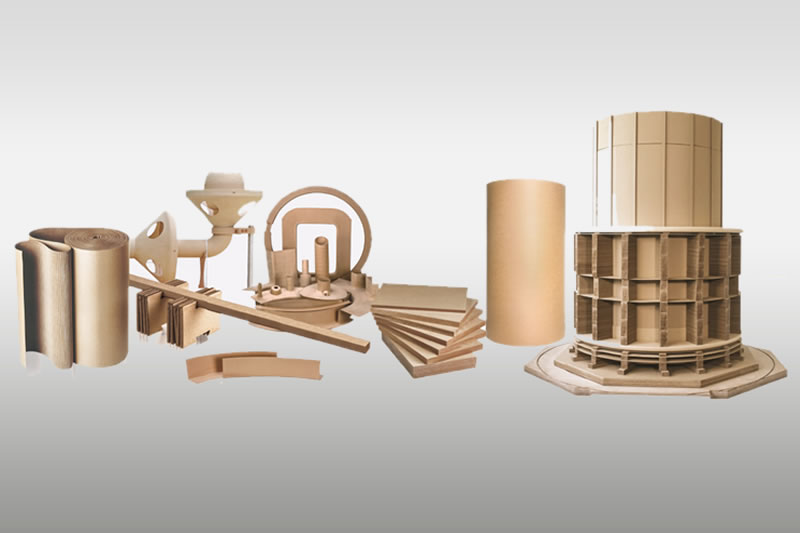The Different Parts of a Dry-Type Transformer
In power systems, dry-type transformers are a key electrical equipment. Its various components cooperate with each other to ensure the stable operation of the transformer. This article will explain in depth the main components of dry-type transformers, such as iron core, winding, insulation materials, cooling devices, shells, and temperature monitoring devices, and deeply analyze the structure, function and significance of each component. This can deepen everyones understanding of dry-type transformers and provide a reference for transformer selection, maintenance and fault handling.

Main components of dry-type transformer
1. Iron core
The iron core belongs to the magnetic circuit part of the dry-type transformer and is generally made of high-quality cold-rolled silicon steel sheets stacked. Because silicon steel sheets have high magnetic permeability and low loss characteristics, they can effectively reduce hysteresis and eddy current losses. During stacking, insulating paint is applied between the silicon steel sheets to further reduce eddy current losses. The iron core constructs a magnetic flux path for the transformer, so that the current in the winding can stimulate a magnetic field and achieve the transmission and transformation of electrical energy. The performance status of the iron core will directly affect the operating efficiency and temperature rise of the transformer.
2. Winding
As the circuit part of the dry-type transformer, the winding is generally made of copper or aluminum wires. According to the winding method and arrangement of the winding, it can be divided into layered windings and cake windings and other types. The layered winding has the characteristics of simple structure and good processability; the cake winding has high mechanical strength and superior heat dissipation conditions. Winding is the core component of transformers to realize electrical energy conversion. It uses the principle of electromagnetic induction to convert one voltage level AC energy into another voltage level AC energy of the same frequency.
3. Insulation material
Insulation materials are mainly used to isolate windings and cores to avoid short circuits and grounding failures. Common insulation materials include epoxy resin, insulating paper, insulating paint, etc. Epoxy resin has excellent electrical insulation properties and mechanical strength and is often used in winding packaging; insulating paper is mainly used for insulation between winding layers; insulating paint is used to apply to the surface of windings and iron cores to enhance insulation performance. The performance of insulation materials is directly related to whether the transformer can operate safely and its service life. Once the insulation material ages and breaks, the insulation performance of the transformer will be reduced, which will lead to failure.

4. Cooling device
Dry-type transformers generally use natural air cooling or forced air cooling. Natural air cooling relies on natural convection of air to achieve heat dissipation; forced air cooling uses a fan to promote air flow to improve heat dissipation efficiency. The cooling device can dissipate the heat generated during the operation of the transformer in a timely manner to ensure that the transformer operates within the normal temperature range. If the temperature is too high, it will affect the insulation performance and service life of the transformer, and may even cause damage to the transformer.
5. Shell
The role of the shell is to protect the internal components of the transformer from interference from external environmental factors. The shell materials are generally metal and non-metal. Metal shells are strong and have good protection performance; non-metal shells are light and have good corrosion resistance. When designing the shell structure, it is necessary to fully consider ventilation and heat dissipation as well as ease of installation and maintenance. The shell not only has a protective function, but also has a certain degree of sound insulation and protection, which can reduce the impact of noise generated by the operation of the transformer on the surrounding environment. At the same time, the shell can prevent people from contacting live parts and ensure the personal safety of personnel.
6. Temperature monitoring device
The temperature monitoring device is used to monitor the operating temperature of the transformer in real time. Common temperature sensors include thermocouples, thermal resistors, etc. These sensors can convert temperature signals into electrical signals and transmit them to the control system for display and alarm. Through the temperature monitoring device, the staff can detect the overheating of the transformer in time and take corresponding measures. This can prevent the transformer from being damaged due to overheating and ensure the safe operation of the transformer.
- more+releated article
- 2025-12-13How to Select and Use Phenolic Cloth-base Lami
- 2025-12-13How Much Does Bakelite Sheet Cost? 2025 Price
- 2025-12-13Why are most 3240 epoxy boards yellow?
- 2025-12-13What are the Main Applications of FR4 Epoxy Bo
- 2025-12-13Why Does the Price of Insulating Paperboard Va
- 2025-12-13Heat-Resistant DDP Insulation Paper
- 2025-12-13Comparison of Heat-Resistant DDP Insulating Pa
- 2025-12-13G10 and FR4 Epoxy Boards: Commonly Used for Ge
- 2025-12-13The Price of Heat-Resistant DDP Insulation Pap
- 2025-12-13How to Choose Epoxy Laminate Materials for Gen





